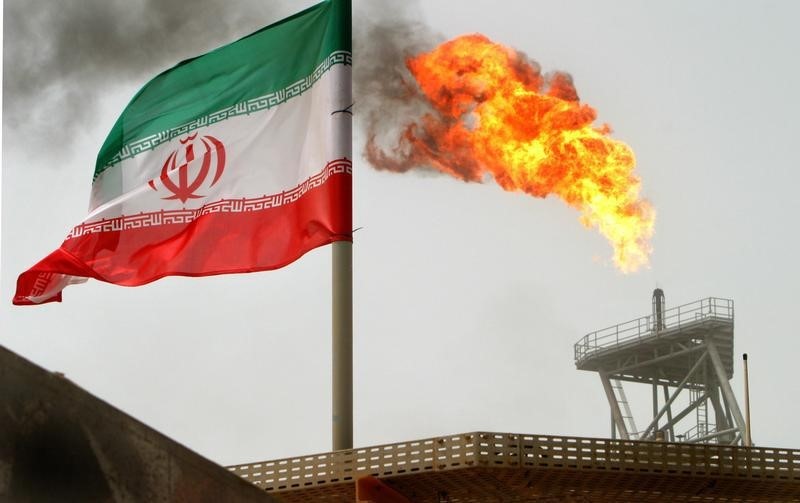Investing.com-- Oil prices fell to weekly loss despite settling higher in volatile trade Friday as investors cooled bets on a wider Middle East conflict after Isreal launched measured attacks on Iran and the latter signaled little appetite to escalated the tit-for-tat skirmish.
At 14:30 ET (18:30 GMT), West Texas Intermediate crude futures rose 0.5% to $83.14 a barrel, while Brent oil futures rose 0.3% to $87.33 a barrel. Both contracts ended the week about 3% lower as a stronger dollar on expectations for higher for longer U.S. interest rates weighed.
Middle East tensions back in focus after Iran explosions
Both benchmarks had soared 3% earlier Friday following reports of the missile strikes in Iran, but geopolitical tensions cooled after Iran played down the attack and appeared to signal no intention to retaliate.
Iran's Fars News Agency saying explosions were heard in Isfahan in central Iran, in parts of southern Syria and in parts of Iraq. ABC news reported that U.S. officials said Israel had retaliated against Iran.
Israel's response following Iran's attacks against Tel Aviv last week, which was in retaliation for an alleged Israeli strike on an embassy in Damascus/
UN reports recently showed Iran was enriching uranium up to 60%, which was more than levels required for commercial power generation. But it was also below the 90% enrichment level required for an atomic bomb.
Baker Hughes rig count rises
Oilfield services firm Baker Hughes Co (NYSE:BKR) reported its weekly U.S. rig count, a leading indicator of future production, rose to 511 from 506, signalling a step up in drilling activity amid a boost from higher oil prices.
The number of oil rigs are still lagging behind the nearly 600 rig count seen at the same time last year, but domestic oil output is still expected to hit record highs this year as drillers continue to boost efficiency by focusing on the most promising drilling sites.
Goldman lifts oil forecasts
"After rallying sharply to just over $90/bbl on rising geopolitical risks, Brent prices have declined to $87/bbl," said analysts at Goldman Sachs, in a note.
"We still see a $90/bbl ceiling on Brent in our base case of non geopolitical supply hits," the influential investment bank said. "The reasons are that high spare capacity and higher prices will likely lead OPEC+ to raise production in Q3, inventories remain flat over the past year, and prices are already triggering stabilizing responses, including rises in OPEC exports and lower crude demand from the US SPR and refineries."
That said, the bank lifts its floor for Brent to $75 a barrel, from $70, saying it assumes only a gradual normalization in the risk premium, and think that OPEC will manage to keep spot prices above long-dated prices through a smaller unwind of production cuts than we assumed before.
Additionally, "we still see value in long oil positions given significant portfolio hedging benefits against geopolitical shocks, and an attractive 10% annualized roll yield."
It also lifts its Brent forecast to $86 a barrel for the second half of 2024, versus $85 prior, and to $82 a barrel for 2025, from $80.
(Ambar Warrick contributed to this article.)
